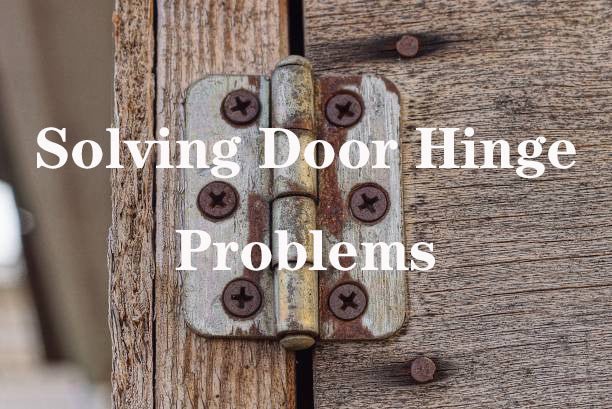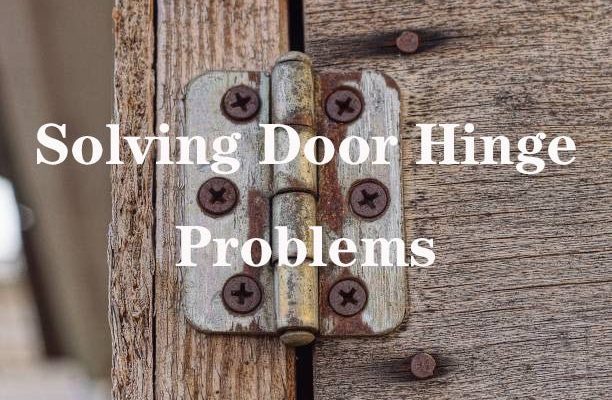
Think of door hinges like the wheels of a car. If one tire is more worn out than the others, it can throw off the whole alignment. When your hinges wear unevenly, it can lead to frustration and even the need for early replacement. Let’s dive into why this happens, what signs to look out for, and how you can address it—so you can keep your doors swinging smoothly.
Understanding Door Hinges and Their Function
Door hinges are simple yet crucial hardware that connects the door to its frame, allowing it to swing open and shut. Every time you use the door, those hinges bear the weight of the door and the force of opening and closing. Now, you might think that all hinges are the same, but there are different types, such as butt hinges, continuous hinges, and pivot hinges. Each type is designed for specific doors and uses, which can affect how they wear over time.
When a hinge is properly installed and maintained, it should operate smoothly without excessive strain. However, improper installation or neglect can lead to uneven wear, especially if one side of the door bears more weight. Factors like door size, frequency of use, and even climate can all contribute to how your hinges perform. Keeping an eye on these factors can help you spot potential issues before they become major problems.
Signs of Uneven Hinge Wear
You might be asking, “How do I know if my door hinges are showing excessive wear?” Well, there are a few signs to look for that indicate trouble:
- Squeaking or grinding noises: If your door is making strange sounds, your hinges might be wearing unevenly.
- Misaligned door: If your door doesn’t close properly, it could be due to one hinge being more worn than the other.
- Difficult movement: If your door feels heavy and difficult to open, it could mean that one side of the hinge is struggling.
- Visible damage: Inspecting the hinges can reveal cracks, rust, or unusual wear patterns that indicate a problem.
If you’re experiencing any of these, don’t wait too long to address them. Uneven wear can lead to more significant issues down the road, like needing to replace the entire hinge.
Common Causes of Uneven Hinge Wear
Understanding the causes of uneven hinge wear can help prevent it in the future. Here are some of the most common culprits:
- Improper installation: If the hinges are not aligned correctly during installation, it can create stress on one side.
- Heavy doors: A heavier door places more strain on the hinges, leading to increased wear on the side that carries the most weight.
- Climate influence: Changes in humidity or temperature can cause materials to expand and contract, affecting hinge alignment.
- Lack of maintenance: If you haven’t lubricated the hinges periodically, they can wear out more quickly due to friction.
In some cases, the type of hinge you choose can also impact wear. If you have a heavy door but opted for a lightweight hinge, it’s likely to wear out faster. Choosing the right hinge for your door is key to preventing issues.
How to Fix Uneven Hinge Wear
If you’ve identified uneven wear on your door hinges, don’t worry—it’s something you can address. Here’s what to do:
1. Inspect the Hinges: First, take a close look at your hinges. Check for rust, cracks, or any signs of damage that may require replacement.
2. Lubricate the Hinges: If they seem dry, apply a good-quality lubricant, like WD-40. This will help reduce friction and may improve performance temporarily.
3. Realign the Door: Sometimes, removing the screws and slightly adjusting the hinges can help realign the door, making it less unevenly weighted.
4. Replace Worn Hinges: If the hinges are damaged beyond repair, it’s time to replace them with new ones designed to handle the weight of your door.
Keep in mind that taking the time to regularly check and maintain your door hinges can save you a lot of hassle down the line.
Preventing Future Hinge Wear
So, how can you avoid this issue in the future? Here are some simple yet effective steps:
- Regular Maintenance: Clean and lubricate your hinges at least every six months. This can prevent dirt build-up and reduce wear.
- Choose the Right Hinge: Make sure to select hinges rated for the weight and size of your door. Heavy doors require heavy-duty hinges.
- Check Alignment: Periodically check that your door remains properly aligned. If you notice changes, address them quickly.
- Avoid Constant Slamming: Encourage gentle use of your doors to minimize unnecessary strain on the hinges.
By taking these proactive measures, you can extend the lifespan of your hinges and keep your doors functioning smoothly.
When to Call a Professional
If you’ve tried everything and still find that your door hinges are showing excessive wear, it may be time to call in a professional. A handyman or carpenter will have the expertise to diagnose the issue more thoroughly. They can also install higher-quality hinges if necessary, ensuring that your doors operate correctly for years to come.
In some cases, if your door frame is warped or damaged, it might require more extensive repairs that you wouldn’t want to tackle alone. A pro can assess the entire situation and provide a long-term solution.
Excessive wear on one side of your door hinges can be frustrating, but it’s a problem you can tackle with the right knowledge. By understanding the causes, signs, and solutions, you’ll be well-equipped to maintain your doors and keep them in great shape. Regular inspection and maintenance are your best friends here. Remember, a little attention goes a long way in extending the life of your door hinges, so don’t overlook them!
